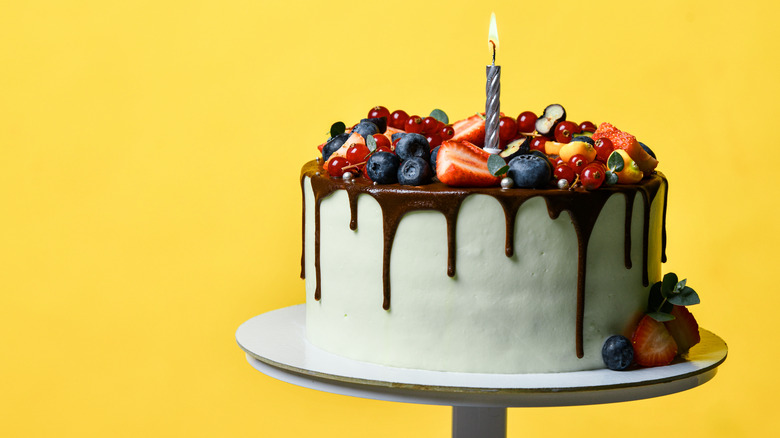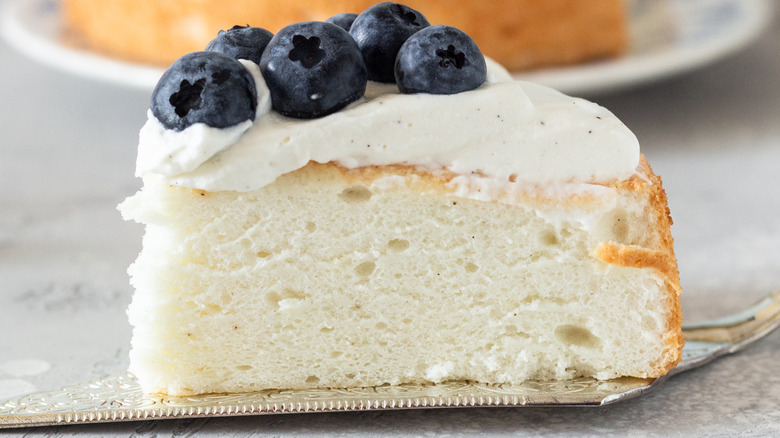The Differences (And Similarities) Between Yellow And White Cake
There are countless flavors and variations of cakes yet, time and again, it's a classic yellow or white cake that we see at birthdays, weddings, and celebrations of all types. Both vanilla in flavor, a yellow and white cake can accommodate every kind of icing and filling from fruit compotes to ice cream to chocolate ganache to salted caramel Italian meringue buttercream. It all works with yellow and white cake.
But if you've ever wondered how these two popular cake varieties differ, you're not alone. After all, they tend to taste similar, so why is one yellow and the other isn't? In regards to flavor, white and yellow cake can pretty much be interchangeable, but if you're going for looks as well as flavor, then getting the color right matters. The yellow color of the cake, or lack thereof, is basically affected by a single ingredient and it's not food coloring.
How yellow cake gets its color
Most non-vegan cakes are created with the same basic ingredients which include flour, eggs, fat, and sugar along with leavening agents, and a liquid. For the yellow cake, whole eggs are used (as opposed to egg whites or yolks only) and the fat used is often butter which has a natural yellow tint to it. However, the real cause of the yellow color is those egg yolks. The darker the yolks are, the more yellow the finished cake is going to appear. The fat from the yolks is also going to create a cake that has a good, soft crumb with very little dryness, so long as it's not over-baked.
Obviously, vanilla-flavored cake calls for vanilla extract so using the dark brown extract that most of us are used to is perfectly fine and even slightly adds to the color of the cake. A classic frosting choice for yellow cake is chocolate. It's a combination that has been making appearances at birthday parties and celebrations for decades and gives you that perfect vanilla-chocolate flavor pairing. But a basic vanilla buttercream, pink strawberry frosting, or any favorite flavor would also be perfect with yellow cake.
Egg whites only for white cake
White cake is often reserved for special occasions or if someone specifically asks for a white-colored cake. Why the fuss? Simply put, white cake is a bit more labor-intensive than yellow cake because you're required to separate the egg yolks from the whites. Only egg whites go into making a white cake in order to keep the cake as white as possible. For the same reason, many bakers will also opt to substitute vegetable shortening for butter as the fat, so as to not add even the slightest yellow tint to the batter. Going further, there is also clear vanilla extract that exists for the same reason.
While the flavor of vanilla white cake is similar to vanilla yellow cake, there may be a difference in the texture. Because you're using only the egg whites, you won't have as much fat incorporated into the batter which makes the cake less tender than its yellow counterpart. Bakers hardly consider this a problem though, and may just utilize more filling and frosting to counteract any dryness. White cake is a popular choice for weddings to go along with the bridal white theme, but it is also a lovely contrast for both pastel and super bright colors equally. In the end, it's really a matter of preference on whether to make your vanilla cake yellow or white.


